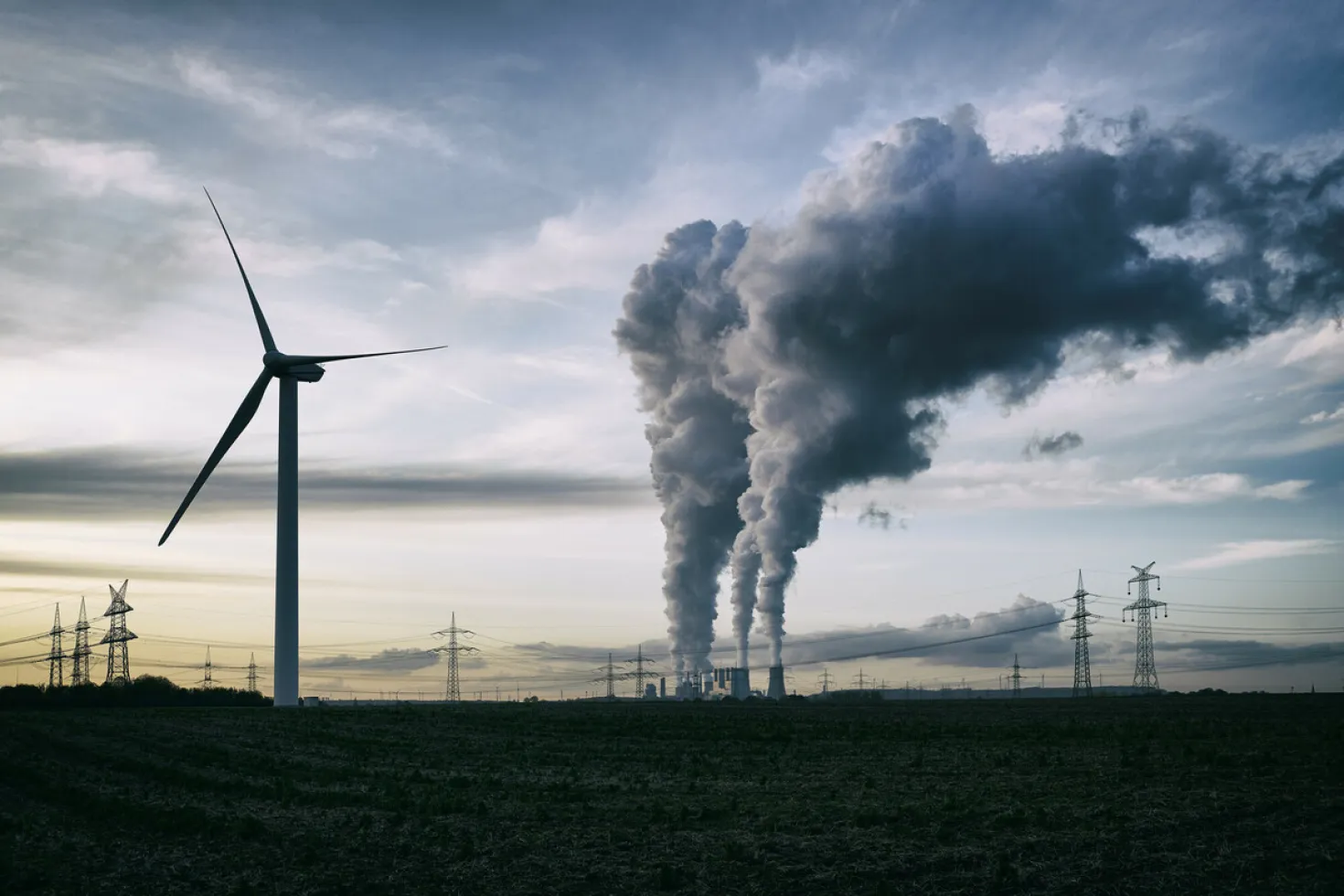Air pollution’s toll on public health and cancer control
Air pollution is more than just an environmental issue, it's a pressing public health crisis with far-reaching consequences. Dr Carlos Dora, President of the International Society for Urban Health (ISUH) explains how an effective solution requires a dramatic shift from current models of development and consumption.

Air pollution has acute as well as long-term impacts on health, including heart attacks, asthma episodes, strokes, lung cancer, cardiovascular and respiratory diseases. Measures to reduce air pollution can lead to the prevention of this and other diseases, including several types of cancer.
HIGHLIGHTS
- While people can adopt healthier lifestyles, they cannot control the quality of the air that they breathe.
- Air pollution is directly implicated in the causation of lung cancer, heart attacks, strokes, cardiovascular and respiratory diseases.
- Measures to reduce air pollution can lead to the prevention of these as well as other health problems, including several types of cancer and other non-communicable diseases.
- Air pollution must be tackled as a systemic issue, requiring a multifaceted solution. Shifting away from models of development based on fossil fuels and unlimited consumption should be part of disease prevention.
Indoor and outdoor air pollution is comprised of toxic chemicals and heavy metals, which primarily arise from the combustion of fossil fuels, such as oil and coal, or biomass, such as wood, dung, and agricultural waste. These particles infiltrate people’s lungs and enter the bloodstream, posing severe health risks, including cancer, stroke, respiratory, cardiovascular diseases and other health issues. According to the State of Global Air 2019 report, air pollution was the fifth highest mortality risk factor in 2017 globally.
Children and older adults are particularly vulnerable, notably to pollution-induced pneumonia, as are women due to their greater exposure to indoor air pollution from fossil fuel-based cooking stoves and smoky kitchens. People who work outdoors in polluted areas, such as street vendors and traffic officers, face a higher risk of developing health problems due to air pollution.
While pollution levels vary across regions, the World Health Organization (WHO) has estimated that 99% of the world’s population breathes air that exceeds air quality limits. Air pollution crosses borders and has regional as well as local impact and even rural locations, such as the Swiss mountains, aren't entirely free from particle pollution.
Low and middle-income countries experience greater levels of air pollution, with the highest concentrations presently recorded in South Asia and Africa. Until a few decades ago, levels were very high in the USA and in Europe but they have dropped substantially where clean technologies and environmental regulation have been adopted. The problem can therefore be solved.
Many high income countries still have levels of air pollution that cause substantial health harms, however, as the threshold for clean air is quite low. Overall the more polluted the air, the worse the impact on health.
Mostly air pollution comes from burning fossil fuels or biomass for energy production. In certain parts of the world (e.g. North Africa, Gulf States) desert sand also contributes to pollution levels.
It is key to identify the sources of air pollution at the local or regional level in order to respond adequately, says Dr Carlos Dora, President of the International Society for Urban Health (ISUH) and former coordinator for the Public Health and the Environment Department at WHO.
“In the north of India and Nepal, for example smoke, from burning agricultural waste in certain seasons adds to constant levels of pollution from wood and coal burning in homes and fossil fuels used for transport and energy. In places enclosed by mountains, such as Ulaanbaatar in Mongolia, where substantial quantities of coal are burnt for energy, the geography creates a pollution trap.”
– Dr Carlos Dora, President of the International Society for Urban Health
Agriculture is also a significant and often overlooked source of pollution. “In Europe, it is a very big source of air pollution,” he adds. “It's not talked about, partly because of the interests and power of the agriculture industry in the EU. And we know that if fertilisers are being used in rural France, for example, Paris will get air pollution, even England.”
Indeed, farm lobby groups representing big agribusinesses and large landowners have a significant influence on EU agricultural policy, which makes it difficult for policymakers to implement effective measures to reduce air pollution caused by agriculture.
Here too, as with tobacco and alcohol industries, commercial interests undermine public health as the pursuit of these interests directly or indirectly contribute to air pollution.
Commercial determinants of health and air pollution
While the connection between the commercial interests and marketing strategies of the tobacco and alcohol industries is quite straightforward, however, the connection is more complex when considering sectors such as the oil, airline and automobile industries: The products of these companies are not inherently harmful or addictive; yet, their widespread use or their technology choices can pose significant health risks.
“The food industry is a good parallel. Food serves a useful, even essential purpose. We all need food, right? But we do not necessarily need junk food, ultra-processed foods, sugary beverages. Cars and planes also serve a purpose but the current extent of their use and the consequent pollution isn't necessary. Addressing this, however, requires broad, systemic changes, not just individual actions, guided by thoughtful policy-making and industry-wide changes.”
– Dr Carlos Dora, President of the International Society for Urban Health
High-income countries, historically significant contributors to air pollution, have made substantial strides to reduce these levels. Dr Dora cites as an example the UK's Clean Air Act of 1952, which dramatically cut down on household coal burning, and technological advancements in the U.S.
Low- and middle-income countries, however, are often reliant on burning fossil fuels for economic development and therefore face challenges in achieving pollution reduction.
An end to fossil fuels and a systematic change in consumption patterns
Potential solutions do exist. The cost on clean energy has dropped dramatically and investing in it now offers economic benefits in addition to mitigating the effects of climate change and reducing health-related expenses. Technology can also be harnessed to reduce air pollution. Dr Dora cites, for instance, how waste can be harnessed to produce methane for natural gas, leading to a reduction in waste burning and generating clean energy. Solar energy is being successfully used to power health facilities and homes in remote and low income locations.
“Thanks to technology, there is an opportunity for developing economies to “leap frog” directly to the best instruments and innovations, rather than expanding on the use of polluting and increasingly costly and outdated technologies” – initiating a disruptive transition much as they did with communications, developing cellular phone networks rather than landlines. For them to do so, however, implies that they have access to these technologies.
Dr Dora warns, however, that there is a need for systemic changes in development and consumption patterns. This means, for instance, transitioning from a car-centric society towards an environment promoting public transportation, as well as pedestrian and cycling-friendly spaces.
“Although electric vehicles are often hailed as a greener alternative, a life-cycle analysis shows that the production process for these vehicles – the mining for the batteries, the building of the cars –can generate substantial pollution, making the promotion of public transportation even more essential,” says Dr Dora, pointing to Copenhagen, Denmark and Amsterdam, the Netherlands, as examples of cities that have largely made this transformation.
He adds: “Cities have many opportunities to clean the air prevent diseases through urban policies for clean transport, buildings and construction and waste management, all of which are heavily influenced by municipal authorities and local actors.”
Urban planning strategies, such as incorporating green hedges, parks and trees, can also be effective tools in reducing the impact of air pollution.
“Green barriers can absorb a substantial portion of harmful pollutants, offering significant protection. Green urban space also offers opportunities for physical activity and social connections, as well as reduces the heat island effect in cities and absorption of water during heavy rains helping adapt to climate change.”
– Dr Carlos Dora, President of the International Society for Urban Health
Furthermore, the distance from pollution sources plays a crucial role in mitigating health risks: “Research from schools in Barcelona revealed the significant impact of vehicular pollution on children's respiratory health. By simply altering traffic flow to keep vehicles at least 100 metres away from school entrances, a considerable reduction in exposure to pollutants was achieved, leading to a rapid decrease in respiratory problems in students – as quickly as within two weeks!”
These acute-effect studies serve as important stepping stones towards understanding the broader, long-term health implications of air pollution and communicating the connection between air pollution and health risks. “A systemic understanding of the multifaceted impact of air pollution is crucial to addressing the issue efficiently and effectively, a holistic view of health, environment and lifestyle” says Dr Dora.
“Taking firm measures to reduce air pollution does far more than reduce the direct risk of developing diseases such as lung cancer. It creates an environment that is more favourable to people leading healthier lifestyles, which in turn helps prevent a range of different cancers, cardiovascular and respiratory diseases.”
– Dr Carlos Dora, President of the International Society for Urban Health
Last update
Thursday 14 March 2024
